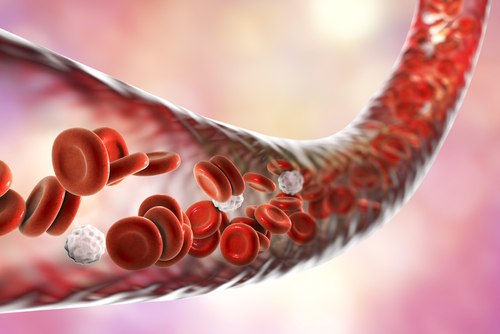Bcl-xL Is a Potential New Therapeutic Target for PAH, Researchers Say

Mutations in the BMPR2 gene alter the ratio of pro- and anti-death signals in cells lining the blood vessels, promoting cells destined to die to escape, which in turn culminates in a build-up of cells in blood vessels and their subsequent blockage, leading to pulmonary arterial hypertension (PAH).
The factor mediating this resistance to cell death, called Bcl-xL, is thus a potential therapeutic target for PAH, researchers suggest.
The study reporting the findings, titled “BMPRII deficiency impairs apoptosis via the BMPRII-ALK1-BclX-mediated pathway in pulmonary arterial hypertension (PAH),” was published in the journal Human Molecular Genetics.
“PAH remains a challenging condition to manage, and the findings reported in the present work offer additional insights as to both the process of development of PAH and ways of monitoring the progression of the disease,” Richard Trembath, MD, Kings College London, U.K., and a study author, said in a press release.
Researchers at the University of Bradford, U.K. previously showed that loss-of-function mutations in the BMPR2 (bone morphogenetic protein type II receptor) gene are present in more than 80% of cases of familial and heritable PAH. Mutations are also found in around 40% of isolated PAH cases.
The faulty BMPR2 gene, researchers found, contributes to two steps of PAH development – uncontrolled proliferation of cells lining the arteries supplying blood to the lungs, and the resistance of damaged cells to undergo apoptosis (cell death), culminating in the blockage of blood vessels with these cells.
Interested in PH research? Check out our forums and join the conversation!
In 2012, researchers showed how BMPR2 drives the excessive proliferation of pulmonary arterial smooth muscle cells (PASMCs). Now, researchers investigated the mechanism behind how a faulty BMPR2 enhances the cells’ resistance to apoptosis in PAH.
“We wanted to find out why the cells are not dying, but instead were building up inside the wall of the pulmonary arteries. To do this, we needed to identify and investigate the proteins that are influenced by this gene,” said Talat Nasim, MD, of the Bradford’s School of Pharmacy and Medical Sciences, and the study’s lead author.
The Bcl-x gene is a key regulator of apoptosis, and can generate a pro-apoptotic (Bcl-xS) and anti-apoptotic (Bcl-xL) protein, meaning one that promotes or prevents cell death.
Researchers first saw that patients with PAH carried high levels of the anti-apoptotic Bcl-xL transcript (the molecule that gives rise to proteins), while the pro-apoptotic Bcl-xS was reduced. This occurred in patients with and without mutations in the BMPR-II gene.
Then the team used a non-genetic PAH experimental model, the hypoxia-induced rat model of PAH, and confirmed that the animals had reduced levels of BMPR2 gene and higher levels of the anti-apoptotic Bcl-xL.
Also, PAH-PASMCs harboring a disease-linked BMPR2 mutation had higher levels of anti-apoptotic Bcl-xL, suggesting BMPR2 dysfunction might potentiate resistance to apoptosis.
Overall, the results suggested that measuring the ratio of Bcl-xL and Bcl-xS can help identify early stages of PAH. Moreover, Bcl-xL is a potential novel therapeutic target against PAH.
“This protein can be used as a biomarker for accurately identifying PAH in patients,” Nasim said. “This could help us diagnose PAH at an earlier stage, possibly leading to better treatment options for patients. We can also make other services available, such as genetic counseling, to help patients understand the disease and to identify those at risk of developing it.”
Nick Morrell, MD, from the University of Cambridge, and a study author, said: “This exciting work adds significantly to our understanding of how inherited forms of PAH are caused, and potentially offers a new way to diagnose the disease early. Early diagnosis and early treatment mean better outcomes for our patients.”
Nasim’s team has filed a patent for the biomarker, and is investigating its potential as a therapeutic target.







